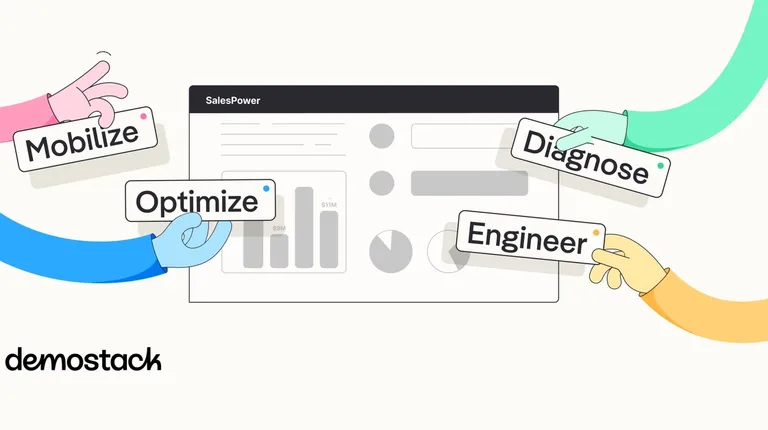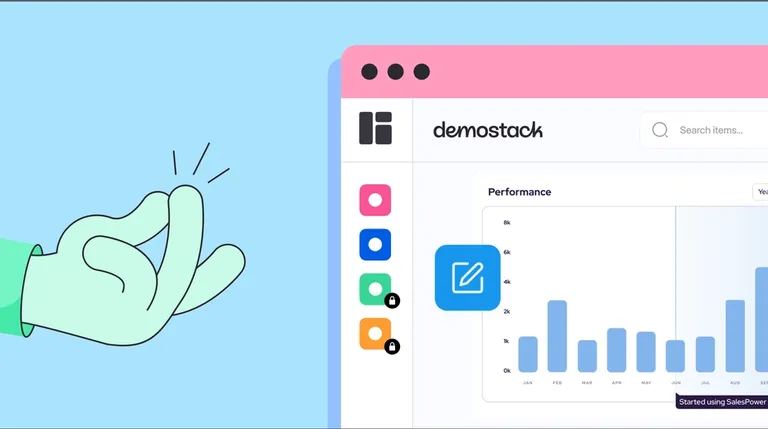Most go-to-market teams say they’re aligned. But if you’ve worked in sales, marketing, product, or customer success, you’ve probably experienced something different.
Sales needs help from product. Product wants more input from customer success. Marketing is trying to get the story straight. Everyone’s pulling—but not always in the same direction. Instead of feeling aligned, it can feel like a constant game of tug-of-war.
For example, engineering ships a major new feature. Marketing and sales start pushing it, but it hasn’t been added to the demo—and worse, no one’s been trained on it. What should feel like momentum turns into confusion and crossed wires.
And when that tension builds, the results are familiar: delayed launches, mismatched messaging, stalled deals, and post-sale experiences that don’t match what was promised. These aren’t just internal issues—they affect buyers, too. And when that happens, revenue takes a hit.
The real problem isn’t a lack of alignment; it’s how teams handle the friction that naturally exists between them.
Friction Isn’t the Enemy. It’s the Opportunity.
Most companies treat internal friction like something to avoid. And yes, some of it should be—things like unclear approvals, redundant steps, or constant back-and-forth over simple decisions.
But not all friction is bad. At its core, friction is neutral—it’s just resistance. And when handled well, it can bring important issues to the surface, sharpen thinking, and help teams work better together. It can even lead to stronger ideas, better collaboration, and a smoother sales process.
The key is knowing the difference between destructive friction—the kind that slows you down and erodes trust—and productive friction—the kind that challenges teams to improve, together.
Trying to remove all friction creates fragility. But managing it intentionally? That’s what builds resilience.

Turning Friction Into Momentum: The Friction Flywheel
Instead of aiming for perfect alignment, focus on managing friction in a way that moves your team forward.
Start by removing the friction that creates confusion and delays—like approval bottlenecks, unclear roles, or repetitive steps that don’t add value. But don’t stop there. Some friction is worth keeping: space for open feedback, healthy debate, or thoughtful disagreement. That kind of tension often leads to better decisions.
When done right, managing friction becomes a growth driver. We call this the Friction Flywheel.
Here’s how it works:
- Clear communication ensures everyone knows what’s expected, what’s changing, and why.
- Confidence grows when teams feel prepared, heard, and not caught off guard.
- Trust builds when people follow through, share context, and give each other space to do their best work.
- Growth happens when your team works together smoothly—without needing constant resets or escalations.
Each step feeds the next. The more you turn the flywheel, the easier it gets to keep deals moving, messages sharp, and teams in sync.

Who's Involved in the Flywheel?
Everyone plays a part in making this work—but revenue leaders are often the ones best positioned to keep the flywheel spinning. They’re at the center of cross-functional collaboration, where sales, marketing, product, and customer success meet.
Here’s what each team brings:
- Sales surfaces real buyer questions, objections, and patterns from the field.
- Marketing shapes the message that sets expectations and creates demand.
- Product and engineering deliver on the promise—and need input when that promise falls short.
- Customer success sees what’s working (and what’s not) after the deal closes—and feeds that insight back into the loop.
When these teams work in sync, friction becomes a tool, not a problem. When they don’t, the flywheel breaks—and everything starts to slow down.
How to Put the Flywheel to Work
You don’t need to overhaul your entire GTM motion to start managing friction better. Small shifts can create real impact.
Here’s where to begin:
- Find the friction. Map out where deals slow down or communication breaks. Is sales waiting on product for every demo? Is legal redlining the same contract terms over and over?
- Fix what’s wasteful. Remove anything that adds delay without value—duplicated reviews, unclear ownership, inconsistent processes.
- Keep what’s useful. Not every disagreement is bad. Build in time for cross-functional feedback, especially between product and GTM teams. Good tension leads to better decisions.
- Make it repeatable. Put systems in place that support strong habits: shared OKRs, regular team reviews, clear handoffs, and aligned priorities. When collaboration becomes routine, the flywheel keeps turning.
In the earlier example, that new feature launch created more confusion than momentum. Now imagine the same moment—but managed differently. Product gives a heads-up before release. Sales enablement rolls out talk tracks and demo updates in advance. Solutions and CS teams get trained early, so everyone’s prepped and ready.
These small changes make it easier for teams to move quickly—without cutting corners or losing trust.
Friction Shouldn’t Be Feared. It Should Be Used.
Friction is part of every growing team. The question is whether you let it wear your team down—or use it to sharpen how you work.
When you manage it with intention, friction becomes a signal. It shows you where to slow down, where to improve, and where to double down on what’s working. Once that flywheel starts turning, your GTM motion gets stronger, faster, and more in sync with your buyers.
Want to eliminate friction from your demo process?Demostack helps GTM teams deliver faster, more flexible demos—without relying on engineering or fighting with fragile environments.






